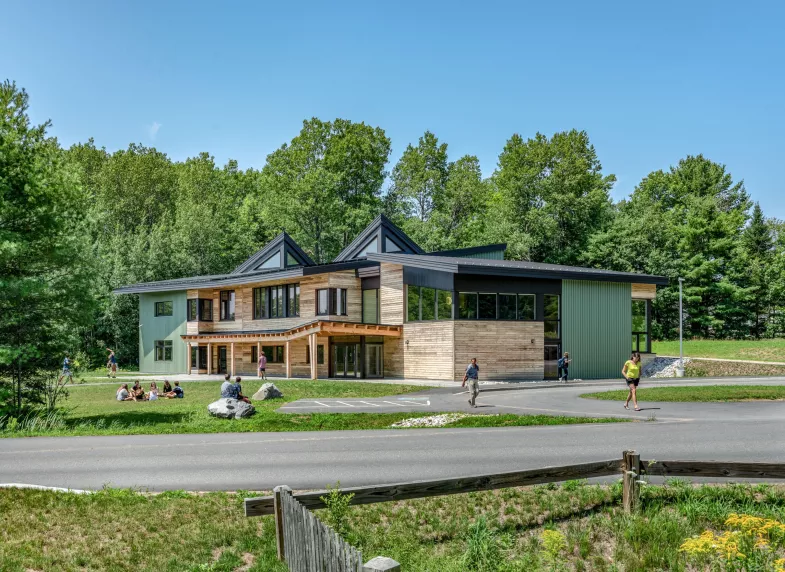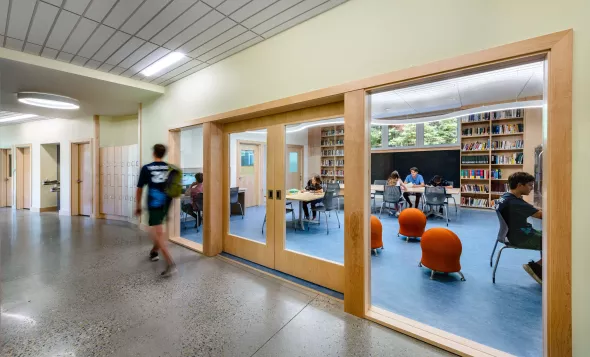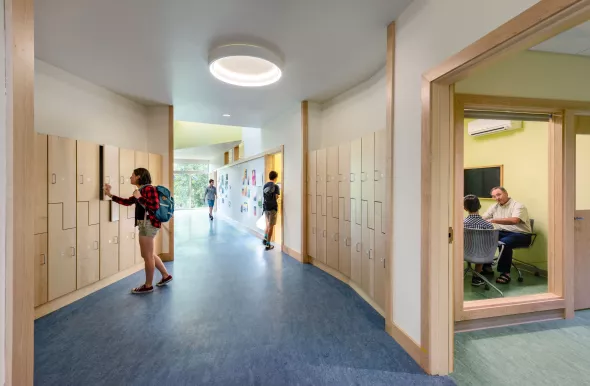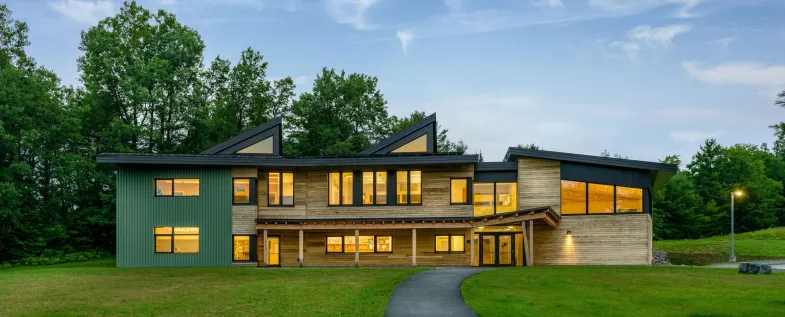June 2024 Project Spotlight: Maine Coast Waldorf High School
This edition of the Phius Project Spotlight series highlights the Maine Coast Waldorf High School project in Freeport, Maine.
This edition of the Phius Project Spotlight series highlights the Maine Coast Waldorf High School project in Freeport, Maine.


Our June Project Spotlight is the first-ever Phius Certified high school: Maine Coast Waldorf High School in Freeport, Maine.
In case you missed it, our monthly Project Spotlights are our way of highlighting the cutting-edge work being done by Phius professionals and providing examples of successful design and construction strategies. We will be featuring projects of various sizes, typologies, and climate zones, offering you a peek behind the curtain of each. The Project Spotlight series will appear in e-blasts to our mailing list (be sure to join if you haven’t already) as well as right here in the Klingenblog.

The Maine Coast Waldorf School requested a building that fosters creativity, inspires curiosity, demonstrates environmental stewardship, and honors the learning spirit within its occupants. The finished product is the nation’s first passive house high school; filled with light, color, and life.
Located on a pastoral property consisting of over 70 acres in Freeport Maine, the new high school building completes the campus by bringing students together from grades K through 12. The new 11,400 square foot building, built for 80 students, includes five flexible classrooms, a student center, conference and meeting rooms, faculty offices and a great room that can be used for movement, education and morning meetings.
The high school building occupies what was a sloping meadow north of the existing campus, separated by an entry drive and a row of trees. It is located facing south for optimized solar design and it is orientated with a view and a curving path that connects to the existing campus beyond, while also providing a sense of privacy from the younger students. A separate drop off and parking area was also provided.
The building design reflects the Waldorf principles for flexibility, abundant natural night, use of color, natural materials and anthroposophic design – creating organic expressionistic designs that cultivate a sensory experience. The simple volumes have been articulated to create visual interest, views, shading and improved natural lighting. The bend in the building reduces the length of the common corridors and defines a central place for lockers and spontaneous conversation. The timber framed portico adds shade and protection from the elements while creating an exterior room for teaching, eating and conversing; and the dormers on the roof bring natural light into the center of the building.

Energy conservation and sustainable design were essential components of the new high school. This project reached beyond the goal for net zero energy demand to pursue the highest energy standard available and to become the nation’s first high school to receive Phius certification. In addition to Phius+ 2015 certification, the new building has received Maine Advanced Buildings certification from Efficiency Maine, certifying that the building is at least 30% more energy efficient than Maine’s minimum energy code requirements. We achieved this through optimized orientation, robust building envelopes, efficient HVAC systems, daylighting controls and shading.
The building envelope (wall and roof assemblies) uses dimensional and engineered wood lumber with dense-packed cellulose and 4” of rigid insulation was used on the exterior walls. The typical wall assembly has an R-value of 51.6 and the typical roof assembly has an R-value of 55. Triple-glazed windows and exterior doors were used throughout in addition to sophisticated building membranes and tapes to control the ingress of moisture from the outside and to prevent interior moisture from migrating into exterior walls. Ductless mini-splits were used for heating and cooling and energy recovery ventilators (ERV’s) were installed to provide continuous fresh air. The building envelope and building systems were modeled using WUFI energy modeling software and the building was blower door tested twice, with a result of 0.04 CFM50/shell area.
All images credit to Chuck Choi